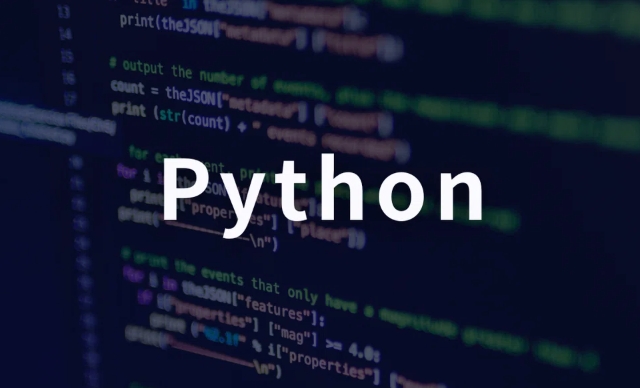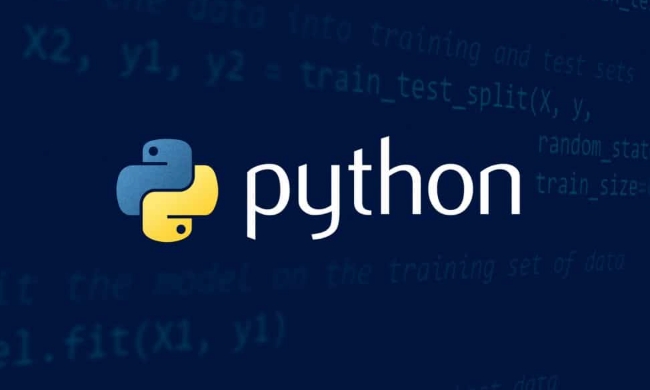XGBoost is an efficient implementation of Gradient Boosting, suitable for the classification and regression tasks of structured data. 1) Install and use pip install xgboost and import the module; 2) When preparing data, you can use Pandas or Numpy input directly, or convert it to DMatrix to improve efficiency; 3) The training model can be built using XGBRegressor or XGBClassifier class; 4) It is recommended to adjust parameters and adjust the combination of n_estimators, learning_rate, max_depth, subsample and other parameters in turn, and use GridSearchCV to automatically search for the optimal configuration; 5) Pay attention to key points such as early stopping, handling missing values, selecting the correct objective, and optimizing memory usage. Mastering these core steps and techniques can help to efficiently apply XGBoost to solve practical problems.

XGBoost is an efficient implementation of the Gradient Boosting algorithm and is widely used in machine learning competitions and practical projects. It performs excellently in tasks such as classification and regression, and is especially suitable for processing structured data.

If you use Python for modeling, XGBoost is a very worthwhile tool. Let’s talk about how to use XGBoost in Python from several key points.
Installation and Import
Before using XGBoost, you need to install it first. Generally, it can be installed through pip:

pip install xgboost
After the installation is complete, import the commonly used modules of XGBoost in Python:
import xgboost as xgb from sklearn.model_selection import train_test_split from sklearn.metrics import mean_squared_error
Note: Although xgboost comes with some data processing functions, it is usually used with scikit-learn , such as dividing training sets and test sets, evaluating model performance, etc.

Prepare data and build DMatrix
XGBoost has its own data format called DMatrix , which can improve training efficiency. You can convert Pandas DataFrame or Numpy arrays to DMatrix:
data_dmatrix = xgb.DMatrix(data=X, label=y)
However, you can also use XGBRegressor or XGBClassifier classes directly, which support native NumPy and Pandas data input, and do not need to be converted to DMatrix manually, which is more suitable for beginners.
For example, if you do a regression task:
from xgboost import XGBRegressor
X_train, X_test, y_train, y_test = train_test_split(X, y, test_size=0.2, random_state=42)
model = XGBRegressor(
objective='reg:squarederror',
n_estimators=100,
learning_rate=0.1,
max_depth=3
)
model.fit(X_train, y_train)
preds = model.predict(X_test)This completes a basic regression model training and prediction process.
Parameter tuning suggestions
The power of XGBoost lies in its flexible parameter configuration, but it can easily make people "lost" in a bunch of parameters. Here are some common and important parameters and parameter adjustment suggestions:
- n_estimators : The number of trees is generally larger, the better, but overfitting should also be avoided.
- learning_rate (eta) : Learning rate, controlling the weight update range of each step, smaller values require more iterations.
- max_depth : The maximum depth of each tree. The value is large and may overfit if it is small.
- subsample : The sample ratio used for each training, less than 1 can prevent overfitting.
- colsample_bytree : The feature ratio used by each tree, which is also used to control over fitting.
When adjusting parameters, you can do it in order:
- Fix learning_rate, adjust n_estimators and early_stopping_rounds.
- Adjust max_depth and min_child_weight.
- Adjust subsample and colsample_bytree.
- Adjust reg_alpha and reg_lambda (L1/L2 regularity).
GridSearchCV or RandomizedSearchCV can be used to automate the search for the best parameter combination.
Notes and FAQs
When using XGBoost, there are some details that are easily overlooked:
- By default, XGBoost does not automatically stop early, you need to specify the verification set.
- If your data has missing values, XGBoost can be processed automatically without additional padding.
- For classification tasks, remember to set the correct objective, such as
binary:logisticormulti:softmax. - For large data sets, consider using
histogrammethod to speed up training (set bytree_method='hist'). - The memory usage is high during training. If you encounter OOM problems, you can try to reduce the batch size or reduce the number of features.
Basically that's it. Although XGBoost is powerful, the entry threshold is not high. The key is to understand the role of each parameter and continuously try to optimize it based on actual data. As long as you master the basic process and the adjustment ideas, you can achieve good results in many scenarios.
The above is the detailed content of Gradient Boosting with Python XGBoost. For more information, please follow other related articles on the PHP Chinese website!

Hot AI Tools

Undress AI Tool
Undress images for free

Undresser.AI Undress
AI-powered app for creating realistic nude photos

AI Clothes Remover
Online AI tool for removing clothes from photos.

Clothoff.io
AI clothes remover

Video Face Swap
Swap faces in any video effortlessly with our completely free AI face swap tool!

Hot Article

Hot Tools

Notepad++7.3.1
Easy-to-use and free code editor

SublimeText3 Chinese version
Chinese version, very easy to use

Zend Studio 13.0.1
Powerful PHP integrated development environment

Dreamweaver CS6
Visual web development tools

SublimeText3 Mac version
God-level code editing software (SublimeText3)
 How to handle API authentication in Python
Jul 13, 2025 am 02:22 AM
How to handle API authentication in Python
Jul 13, 2025 am 02:22 AM
The key to dealing with API authentication is to understand and use the authentication method correctly. 1. APIKey is the simplest authentication method, usually placed in the request header or URL parameters; 2. BasicAuth uses username and password for Base64 encoding transmission, which is suitable for internal systems; 3. OAuth2 needs to obtain the token first through client_id and client_secret, and then bring the BearerToken in the request header; 4. In order to deal with the token expiration, the token management class can be encapsulated and automatically refreshed the token; in short, selecting the appropriate method according to the document and safely storing the key information is the key.
 Explain Python assertions.
Jul 07, 2025 am 12:14 AM
Explain Python assertions.
Jul 07, 2025 am 12:14 AM
Assert is an assertion tool used in Python for debugging, and throws an AssertionError when the condition is not met. Its syntax is assert condition plus optional error information, which is suitable for internal logic verification such as parameter checking, status confirmation, etc., but cannot be used for security or user input checking, and should be used in conjunction with clear prompt information. It is only available for auxiliary debugging in the development stage rather than substituting exception handling.
 What are python iterators?
Jul 08, 2025 am 02:56 AM
What are python iterators?
Jul 08, 2025 am 02:56 AM
InPython,iteratorsareobjectsthatallowloopingthroughcollectionsbyimplementing__iter__()and__next__().1)Iteratorsworkviatheiteratorprotocol,using__iter__()toreturntheiteratorand__next__()toretrievethenextitemuntilStopIterationisraised.2)Aniterable(like
 What are Python type hints?
Jul 07, 2025 am 02:55 AM
What are Python type hints?
Jul 07, 2025 am 02:55 AM
TypehintsinPythonsolvetheproblemofambiguityandpotentialbugsindynamicallytypedcodebyallowingdeveloperstospecifyexpectedtypes.Theyenhancereadability,enableearlybugdetection,andimprovetoolingsupport.Typehintsareaddedusingacolon(:)forvariablesandparamete
 How to iterate over two lists at once Python
Jul 09, 2025 am 01:13 AM
How to iterate over two lists at once Python
Jul 09, 2025 am 01:13 AM
A common method to traverse two lists simultaneously in Python is to use the zip() function, which will pair multiple lists in order and be the shortest; if the list length is inconsistent, you can use itertools.zip_longest() to be the longest and fill in the missing values; combined with enumerate(), you can get the index at the same time. 1.zip() is concise and practical, suitable for paired data iteration; 2.zip_longest() can fill in the default value when dealing with inconsistent lengths; 3.enumerate(zip()) can obtain indexes during traversal, meeting the needs of a variety of complex scenarios.
 Python FastAPI tutorial
Jul 12, 2025 am 02:42 AM
Python FastAPI tutorial
Jul 12, 2025 am 02:42 AM
To create modern and efficient APIs using Python, FastAPI is recommended; it is based on standard Python type prompts and can automatically generate documents, with excellent performance. After installing FastAPI and ASGI server uvicorn, you can write interface code. By defining routes, writing processing functions, and returning data, APIs can be quickly built. FastAPI supports a variety of HTTP methods and provides automatically generated SwaggerUI and ReDoc documentation systems. URL parameters can be captured through path definition, while query parameters can be implemented by setting default values ??for function parameters. The rational use of Pydantic models can help improve development efficiency and accuracy.
 How to test an API with Python
Jul 12, 2025 am 02:47 AM
How to test an API with Python
Jul 12, 2025 am 02:47 AM
To test the API, you need to use Python's Requests library. The steps are to install the library, send requests, verify responses, set timeouts and retry. First, install the library through pipinstallrequests; then use requests.get() or requests.post() and other methods to send GET or POST requests; then check response.status_code and response.json() to ensure that the return result is in compliance with expectations; finally, add timeout parameters to set the timeout time, and combine the retrying library to achieve automatic retry to enhance stability.
 Setting Up and Using Python Virtual Environments
Jul 06, 2025 am 02:56 AM
Setting Up and Using Python Virtual Environments
Jul 06, 2025 am 02:56 AM
A virtual environment can isolate the dependencies of different projects. Created using Python's own venv module, the command is python-mvenvenv; activation method: Windows uses env\Scripts\activate, macOS/Linux uses sourceenv/bin/activate; installation package uses pipinstall, use pipfreeze>requirements.txt to generate requirements files, and use pipinstall-rrequirements.txt to restore the environment; precautions include not submitting to Git, reactivate each time the new terminal is opened, and automatic identification and switching can be used by IDE.






